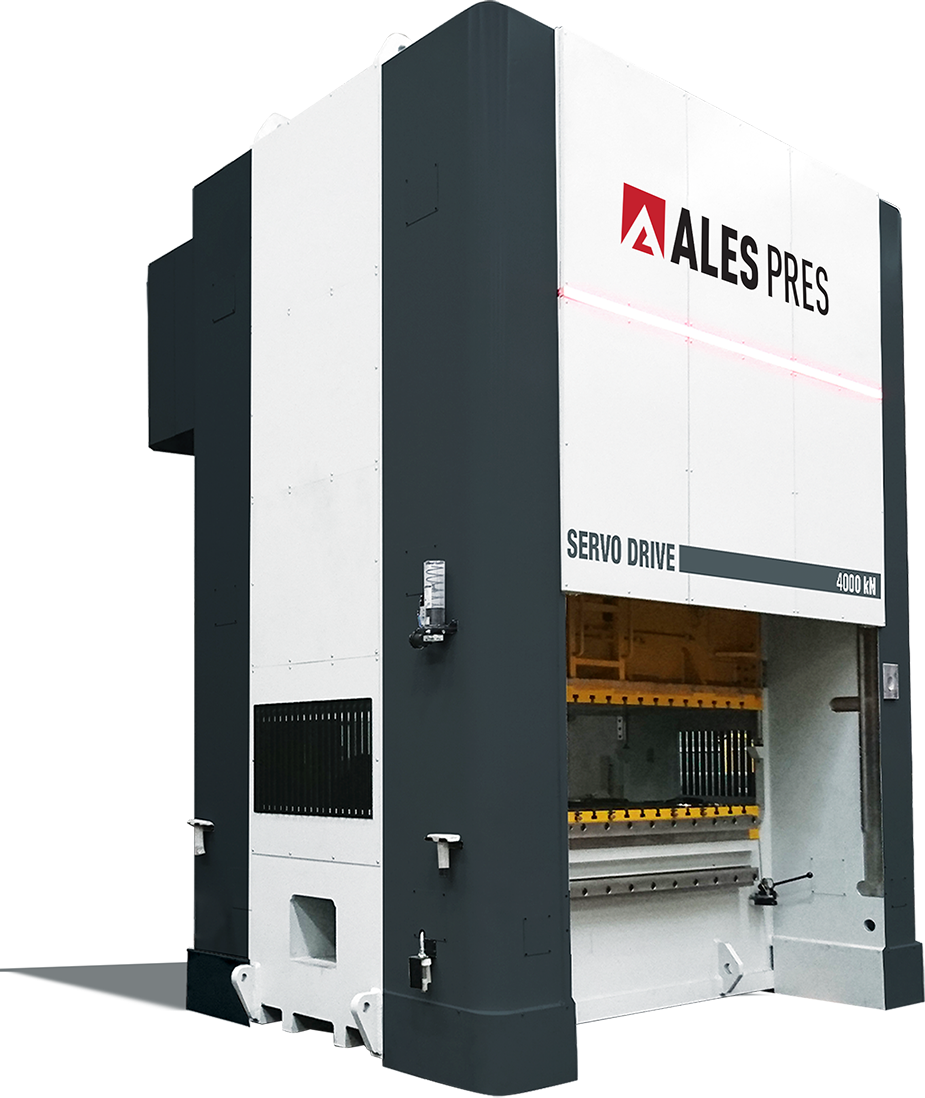Why Should You Invest in a Servo Drive Press Instead of a Traditional Mechanical Press?
Servo drive press offer many benefits compared to old mechanical press: Better precision, flexibility, and quality. Lower energy use and…
Servo Drive Press are the new standard for businesses seeking speed, flexibility, and quality in production. Unlike traditional crank systems, servo drive press are driven by servo motors, allowing programmable control of die movements. This means lower error rates, longer die life, and better energy efficiency.
With servo presses, parameters like downstroke speed, upstroke speed, and dwell time can be defined through software. This flexibility ensures even complex parts can be formed with minimal deformation.
Unlike traditional presses with continuously running motors, servo motors consume energy only when needed. This can reduce annual energy costs by up to 30%.
Servo motor control offers positioning accuracy of ±0.01 mm. This consistency reduces part variations and significantly lowers scrap rates.
Smooth acceleration and deceleration reduce impact forces on dies, which lowers maintenance needs and costs.
Although the initial investment may seem high, servo presses quickly pay off thanks to their many advantages. Energy savings, lower maintenance costs, reduced scrap, and faster production cycles allow the system to amortize itself in a short time.
At Ales Pres, we offer high-performance servo press solutions designed to meet modern production needs. Whether for mass production or special applications, our engineering and sales teams are ready to support you. If you are looking for a reliable partner in servo press technology, you are in the right place.
Servo drive press offer many benefits compared to old mechanical press: Better precision, flexibility, and quality. Lower energy use and…
A servo drive press is a type of press machine used in various industrial applications today, offering high precision and…
A servo press is a type of press machine used in various industrial applications today, offering high precision and energy…
| Feature | Value |
| Mechanism | Eccentric |
| Drive Type | Servo Drive |
| Transmission System | Eccentric shaft or Gear-to-Eccentric |
| Capacity | From 100 Tons to 2.500 Tons (custom-built upon request) |
| Stroke Length | From 50 mm to 800 mm (custom-built upon request) |
| Stroke Rate | From 5 Spm to 100 Spm (custom-built upon request) |
| Number of Pressure Points | 1 / 2 / 4 connecting rods, depending on press type |
| Table Size | From 1,000 mm to 6.500 mm (custom-built upon request) |
| Optional Features | Anti-vibration springs, movable safety guards, quick die change systems (QDCS), sound insulation cabin |
At ALES PRES, we integrate our expertise in eccentric press technology into servo drive press systems to offer solutions suitable for both conventional and modern production lines. We don’t just build machines — we deliver tailored manufacturing solutions. From R&D to post-installation technical support, we’re with you every step of the way. Our expert engineering team is always just a phone call away for your servo drive press projects.

A servo press is a modern type of press that uses a servo motor and encoder instead of a crankshaft. The servo motor controls the ram movement. You can program its speed and position very precisely with a control unit (PLC). This allows flexible movements, not fixed like old presses.
In eccentric presses, the ram speed is fixed and moves in a wave shape. In servo presses, you can adjust the speed, stop time, and return speed separately. This gives better forming quality and efficiency.
It takes about 12 to 36 months to get back your investment. Energy use can drop by 30-50%, scrap can reduce by 40%, and die life can increase by 50%.
No. Servo presses have fewer mechanical parts and need less lubrication. Yearly checks are usually enough.
Yes. Servo presses store die profiles. After changing the die, the press adjusts automatically. This saves time.
Yes. It uses industrial PLCs. ALES Pres also provides a special user interface to control profiles, production data, and errors.
Yes. It can be connected to SCADA systems and track real-time data (hits, time, energy, force). It also works with ERP systems.
Yes. This is very important for deep drawing and forming tasks.
Yes. The energy from braking can be reused or sent back to the power grid.
Not easily, but periodic maintenance and calibration are needed due to external factors like vibration or temperature.
Yes, with proper heating systems and resistant components, especially used in automotive applications.
It stops faster than mechanical presses because it directly cuts motor power, but the exact time depends on machine size and load.
Yes. Operators can adjust the ram speed in real-time for different steps of production.
It communicates using Ethernet, Profinet, and industrial communication protocols.
No. If the servo motor fails, it requires technical service. Manual use is not possible.
No. This is normal. Servo presses are quiet. If it makes unusual noise, then there might be a problem.
No. It presses gently but effectively. Forging needs hydraulic or hot forging presses.
Yes, but to get the benefits of a servo press, dies should be optimized for it. Otherwise, it works like an expensive old press.
Because servo presses are more expensive at first. Eccentric presses are still cheaper for simple, high-volume production.
Not every job. But for precise forming, bending, and special dies, servo presses are one of the best solutions. Die design and material must be suitable.
